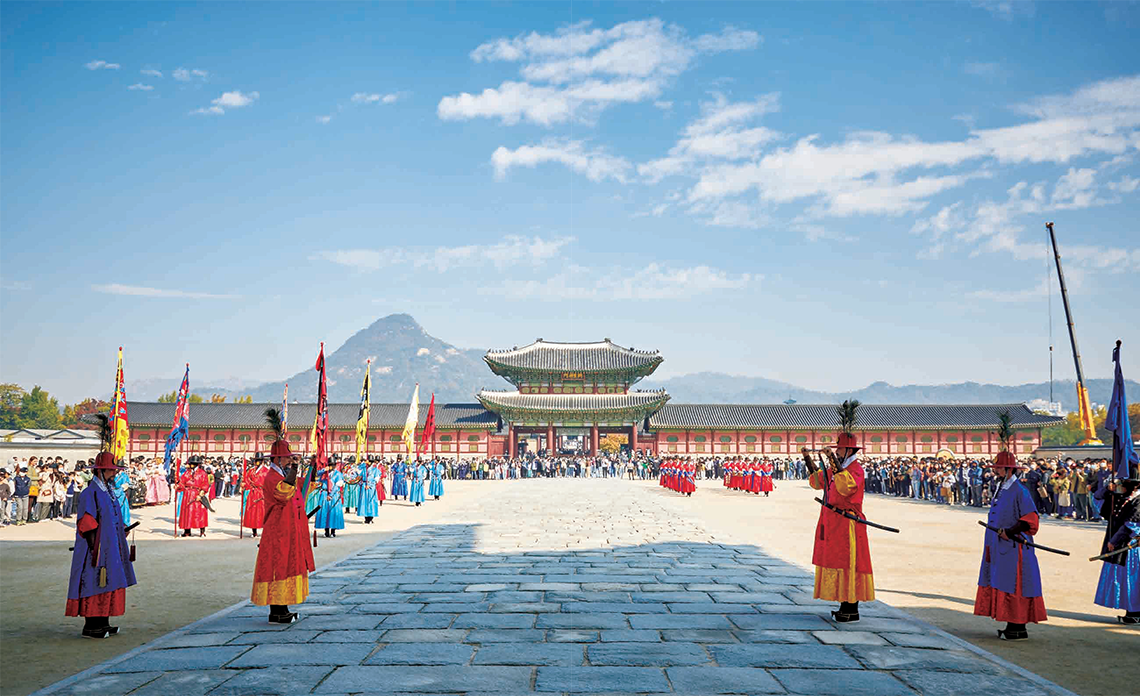Feature
-
The Changing of the Guard at Gyeongbokgung Palace
Twenty Years into Its Restoration Reverberating drumbeats and a colorful array of flags regularly attract the eyes and ears of people around Gwanghwamun Gate of Gyeongbokgung Palace. It indicates that the changing of the guard ceremony is soon to take place here at the front gate of the primary palace of the Joseon Dynasty (1392–1910) with Mt. Bugaksan as a backdrop. The construction of Gyeongbokgung was completed in 1395.
-
Traditional Korean Sauces Derived from Nature
Making and sharing traditional sauces based on fermented soybeans has been an indispensable part of Korea’s heritage and identity for millennia. This tradition is today registered on the National Intangible Cultural Heritage list.
-
The Sky of Joseon Opened at the National Palace Museum of Korea
The National Palace Museum of Korea has recently revamped one of its galleries. After a major makeover, the Scientific Achievements of the Joseon Dynasty gallery was re-opened to the public in December 2022. This newly unveiled gallery focuses on the theme of astronomy as it explores the intricate relationship between science and the governing philosophy during the Joseon era (1392–1910). Astronomy enjoyed high status as a discipline connected with the ruler, assuming an important role in the governance of the state.
-
Dolmens Offer Rare Glimpses into the Lives of Prehistoric Humans
Dolmens epitomize the megalithic culture of the Bronze Age on the Korean Peninsula. They occur around the world from Northern and Western Europe, through the Mediterranean, and across Asia. However, nowhere else in the world shows the concentration of dolmens found in Korea. An estimated 40,000 dolmens were constructed here over the course of the 15,000 years from the 15th century BCE to around the start of the Common Era.
-
The Power of Hageul
Allison is a recent graduate from the University of Wisconsin-Madison where she earned a Bachelor of Arts degree in Linguistics and Asian Language and Cultures with a special focus on Korean language and culture. She has studied the Korean language for 5 years and interned at the Voluntary Agency Network of Korea (VANK) where she worked to help spread Korean culture and history to the world.




